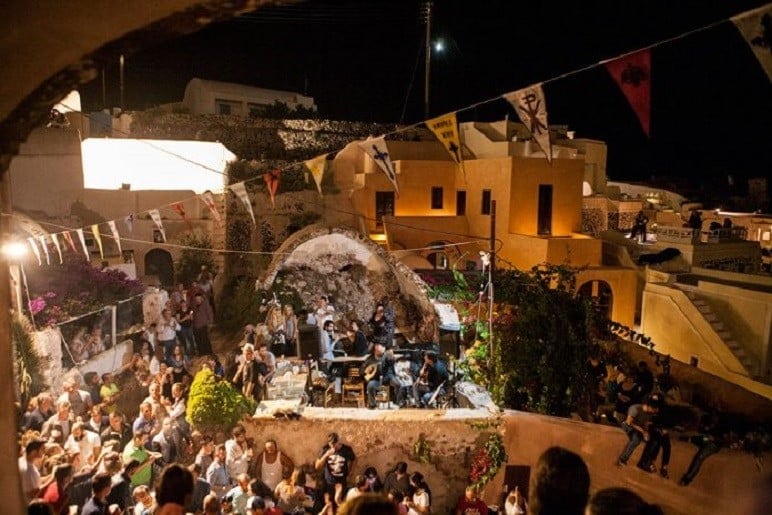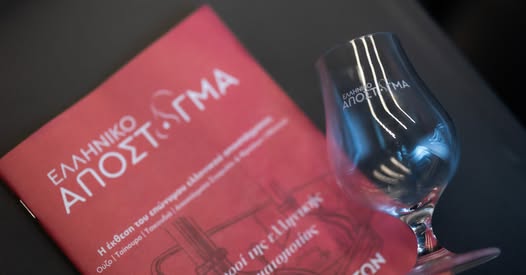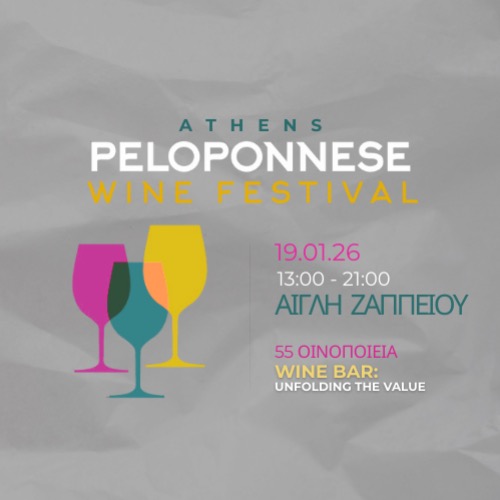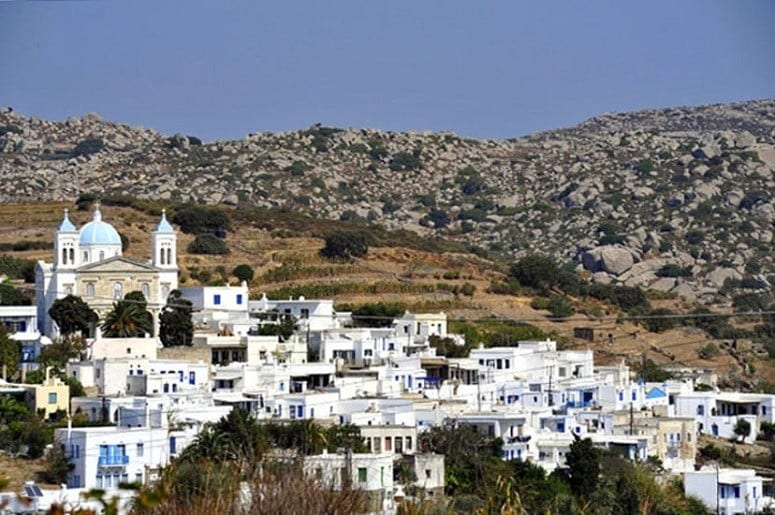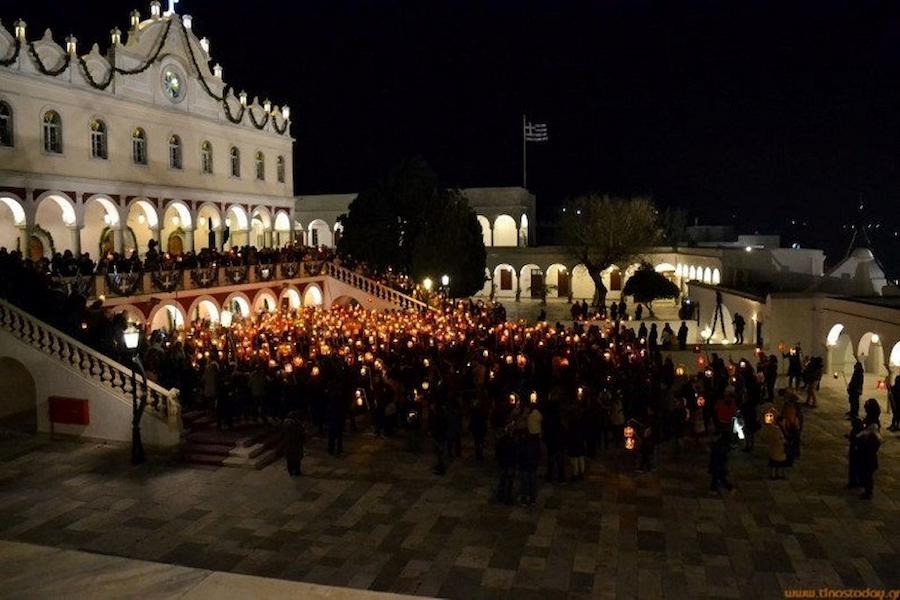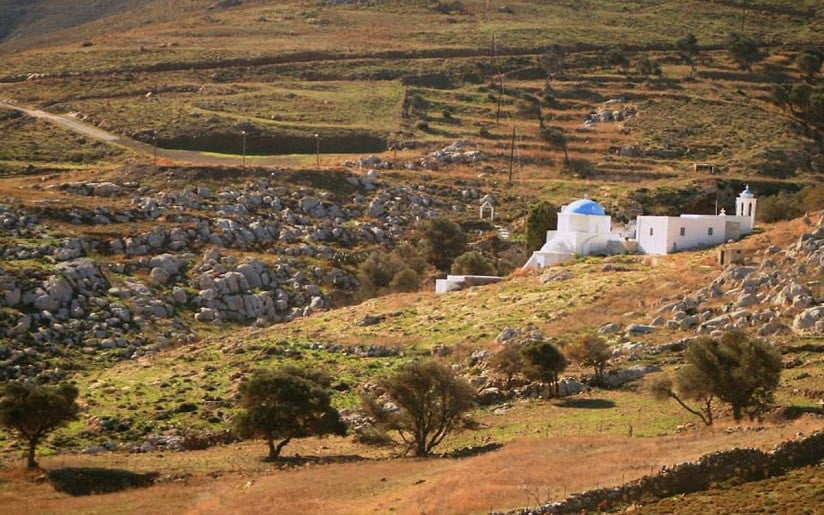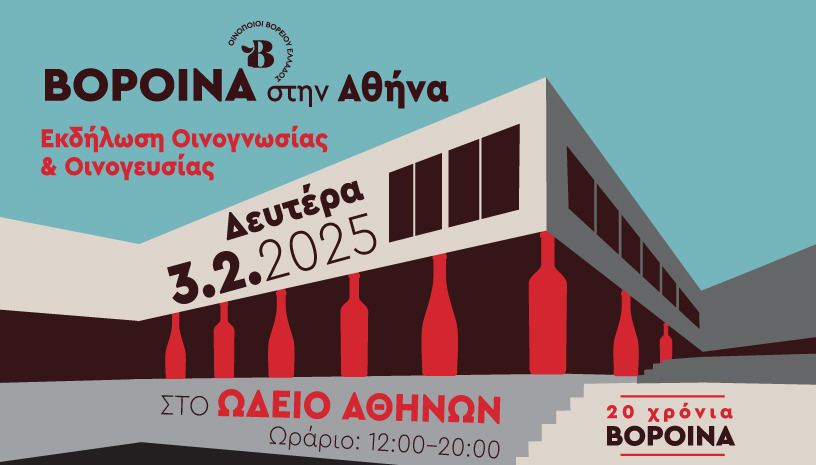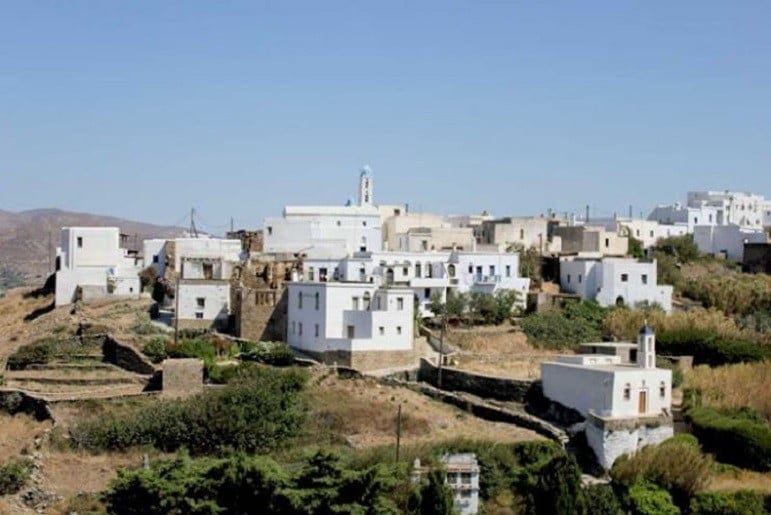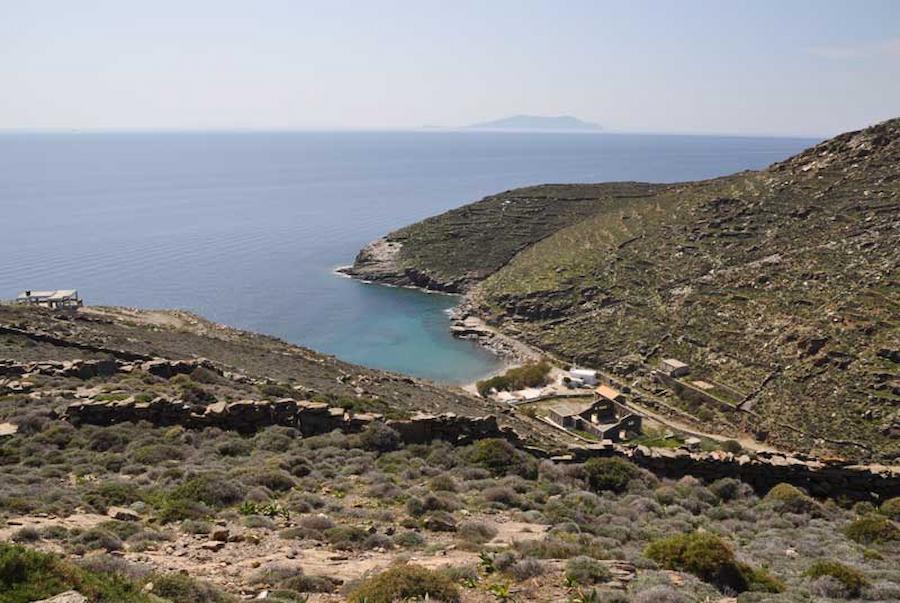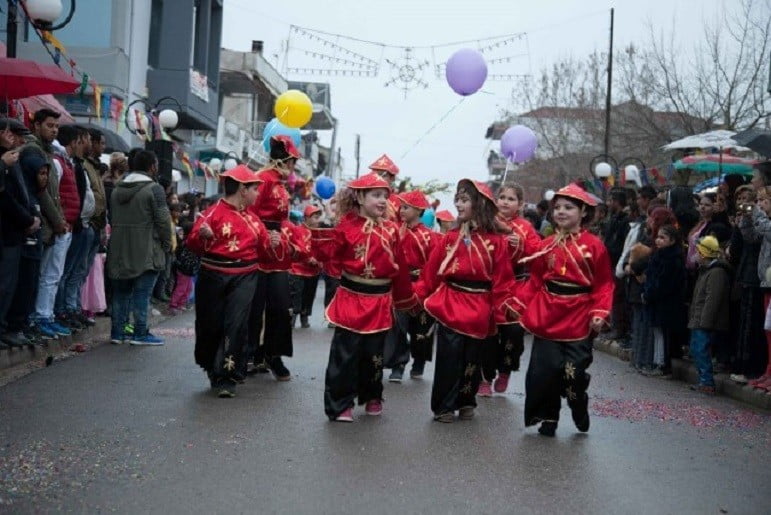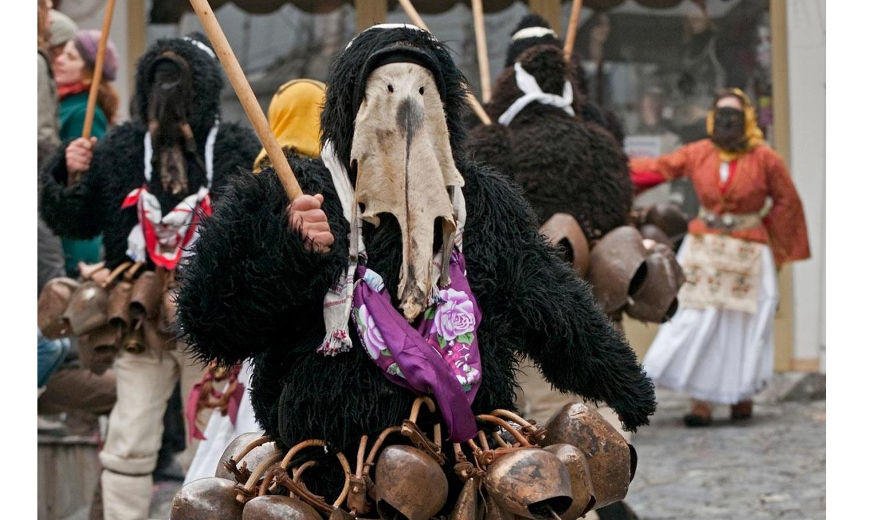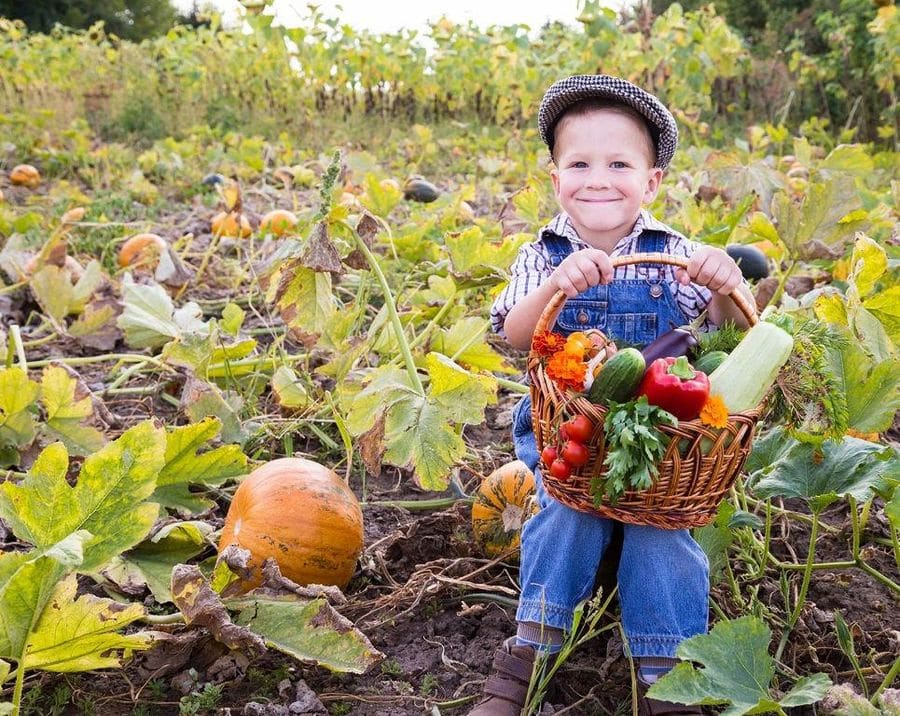on October 19th
Foinikia, once the agricultural settlement of Oia, carries a rich history deeply rooted in the rhythms of the land. Farmers lived here to be close to their fields and vineyards, producing Santorini’s famous wines in underground wineries carved into the volcanic rock. Today, this quiet village bursts into life every October with one of the island’s most treasured traditions: the Festival of Saint Matrona.
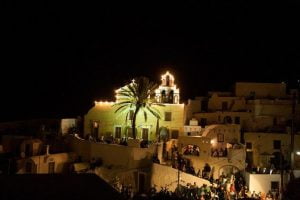
A Church at the Heart of the Celebration
At the centre of the festivities stands the Church of Santa Matrona, built in 1859 by the local ship-owner Francesco Platis. Perched amphitheatrically among the settlement’s houses and vineyards, the church is marked by its characteristic palm trees (foinikies), which gave the village its name. Dedicated to Santa Matrona the Chiopolitida, known as the miracle-maker, the church reflects the deep reverence that the people of the Aegean islands hold for her.
Directly across from the church lies one of Foinikia’s old, decaying mansions. Its expansive patio becomes a focal point of the celebration, lined with serving tables and enormous pots filled with meat and rice pilaf.
The Eve of the Festival
The celebrations begin on October 19, with a solemn evening mass. As the service concludes, the festival bursts into life. The once-quiet lanes fill with music, laughter, and the aromas of food. Old wine cellars open their doors, welcoming locals and visitors who gather from across Santorini to share in the feast.
Traditional instruments—violin, lute (laouto), and tsabouna (a bagpipe-like instrument)—set the rhythm for spirited dancing. Musicians from neighbouring islands often join their Santorini counterparts, enriching the lively atmosphere. The celebration continues long into the night, echoing through the alleyways until dawn.
October 20: The Feast Day of Saint Matrona
On the morning of October 20, the faithful gather for the Divine Liturgy, followed by the solemn procession of Saint Matrona’s icon. The narrow alleys of Foinikia are decorated with rosemary, geraniums, and fragrant herbs, transforming the village into a perfumed pathway of devotion.
After the procession, the festival returns to its joyful spirit. Guests are treated to traditional dishes such as cod with onions, potatoes, and tomatoes, slow-cooked meats, and vast cauldrons of pilaf simmered in wood-fired ovens. As the day unfolds, food, wine, and music bring together locals and visitors alike in a vibrant celebration of faith and community.
Tradition and Community
For the people of Santorini, the Festival of Saint Matrona is more than a religious observance. It is a moment to reaffirm community ties, honour the land and its traditions, and celebrate with music, dance, and food in the spirit of shared heritage.
For visitors, the festival offers a rare glimpse of Santorini’s authentic soul—beyond its touristic fame—immersing them in the living traditions of the island’s rural past.
With its blend of solemn devotion and festive joy, the Festival of Saint Matrona in Foinikia remains one of Santorini’s most genuine cultural experiences.
Indicative Program:
October 19 – Eve of the Feast
- 17:00 – Early Evening: Arrival of locals and visitors in Foinikia. Wander the village alleys and enjoy the quiet charm before the festival begins.
- 18:00 – Vespers Service: Evening mass at St. Matrona’s Church. The faithful gather for prayers and blessings.
- 19:30 – Opening of Wine Cellars: Traditional underground wineries (kanaves) open to welcome guests. Local wine is served.
- 20:00 – Music and Dancing Begin: Traditional instruments—violin, lute (laouto), tsabouna—set the rhythm. Visitors can join in the dancing.
- 21:00 – Feast Starts: Large pots of meat, rice pilaf, and local specialities are served in patios and open spaces.
- 23:00 – Late-Night Celebration: Music and dancing continue into the night. Musicians from neighbouring islands join locals, creating a festive atmosphere.
October 20 – Feast Day
- 07:30 – Morning Liturgy: Divine Liturgy at St. Matrona’s Church. Pilgrims and locals attend the service.
- 09:00 – Procession of the Icon: The icon of Saint Matrona is carried through the decorated alleys of Foinikia. Aromatic herbs, rosemary, and geraniums line the streets.
- 10:30 – Community Breakfast/Brunch: Traditional dishes, including cod with onions, potatoes, tomatoes, and pilaf, are served.
- 12:00 – Music and Dancing Continue: Festivities spread to the village squares and old patios. Live music performances enhance the experience.
- 14:00 – Village Tours: Visitors can explore the old wineries, vineyards, and historic houses while enjoying wine tastings.
- 16:00 – Afternoon Feasting: More traditional meals and desserts are served. Socialising continues among locals and tourists.
- Evening – Closing of the Festival: Music and dancing gradually wind down. Guests often stay until sunset, soaking in the festive yet intimate atmosphere of the village.
Photos by: Konstantina Sidiropoulou (K. Yellow)

